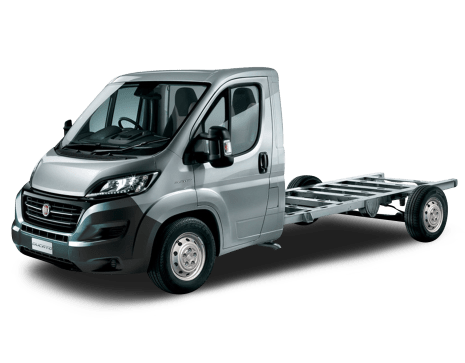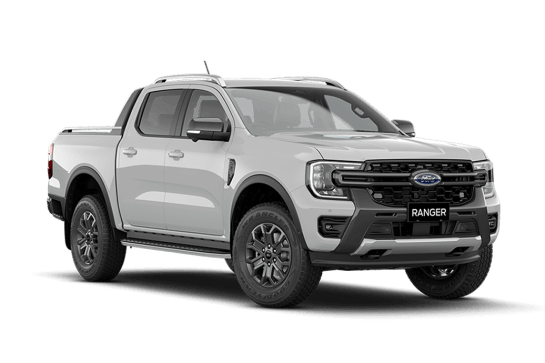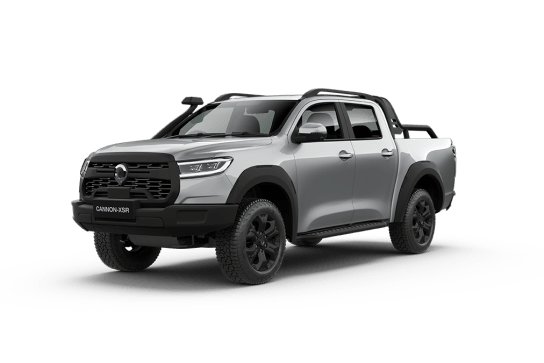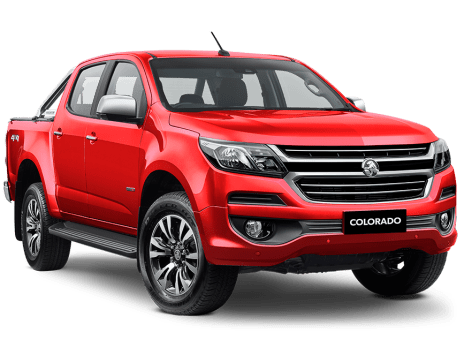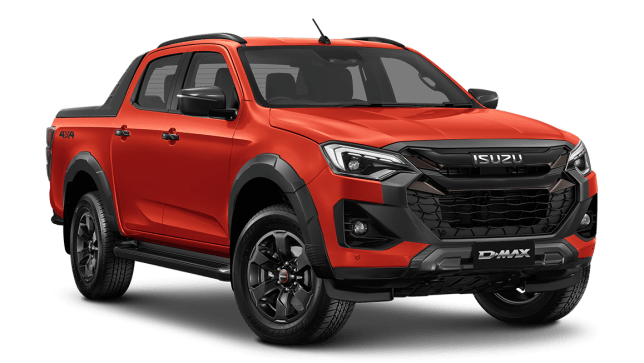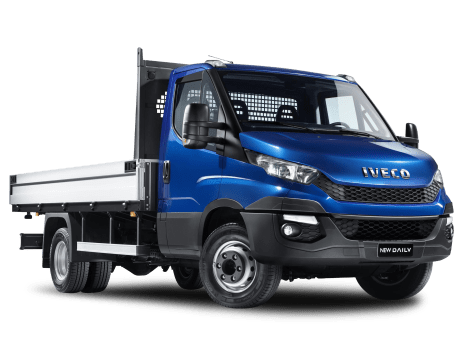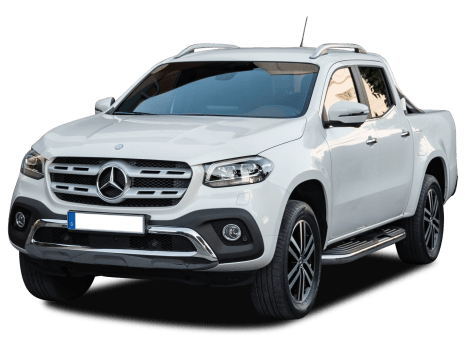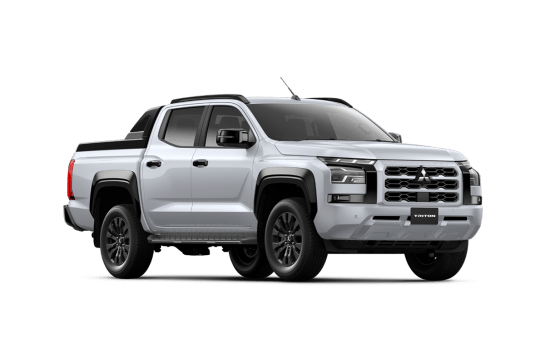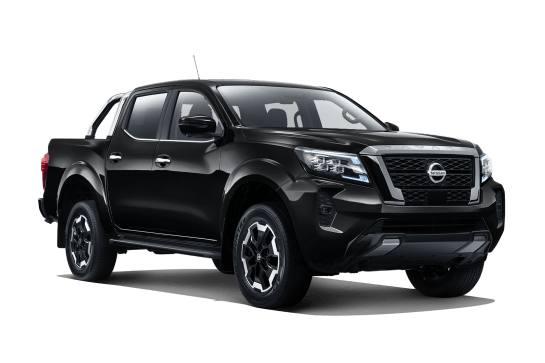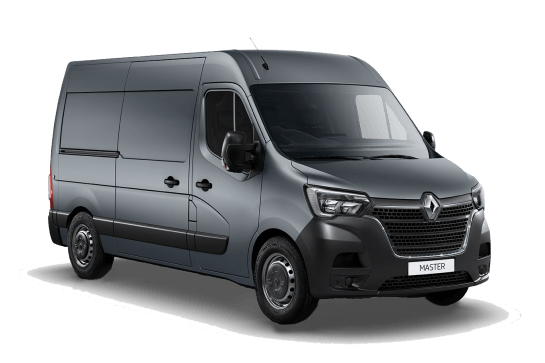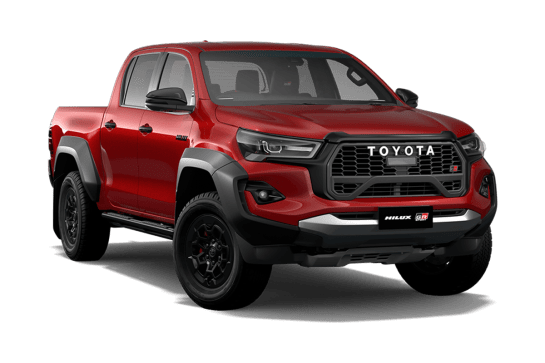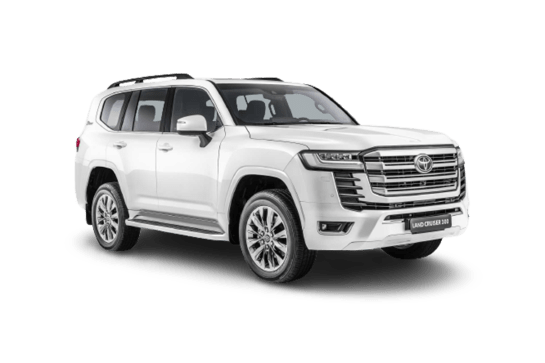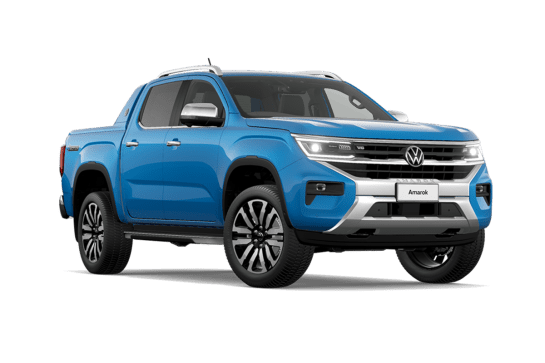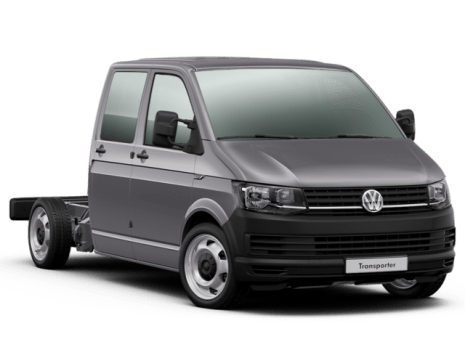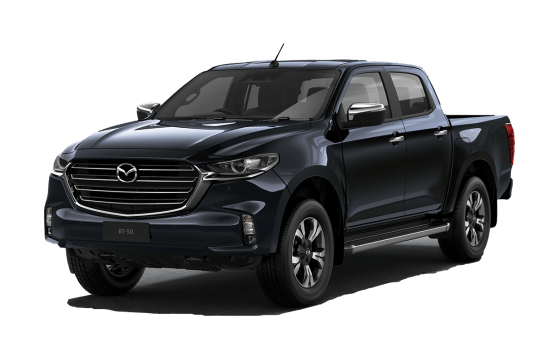
Mazda BT-50 VS Mercedes-Benz Sprinter
Mazda BT-50
Likes
- Capable off-road
- Benefits from D-Max platform
- More refined than ever (for a ute)
Dislikes
- More torque wouldn't go astray
- Noisy when pushed hard
- Needs all-terrain tyres for tougher off-roading
Mercedes-Benz Sprinter
Likes
- Safety
- Driver comfort
- All-round competence
Dislikes
- Pricing (compared to Chinese rivals)
- No driver’s left footrest/armrest
- Servicing costs
Summary
Mazda BT-50
Mazda’s BT-50 range has been updated with more safety gear, new wheels and exterior lighting, an upgraded multimedia system and digital driver’s display, as well as styling tweaks across the board, including to the interior trim.
Prices have, of course, gone up across the range and the previous top-shelf Thunder has been dropped from the line-up for now with the SP replacing it.
So is it worth your consideration?
Read more about
- Look out, Toyota RAV4 Hybrid! Mazda CX-5 Hybrid launch timing, name and price range locked in as debut of hotly anticipated family SUV looms
- Mazda's big plans for Australia: Japanese brand to bring hybrids, plug-in hybrids and electric cars Down Under to battle popular cars such as the Toyota RAV4 Hybrid, Mitsubishi Outlander PHEV and Kia EV5
- 'We don't need a Raptor rival': Why Mazda's new BT-50 has prioritised customer choice instead of a flashy name
Read on.
| Safety rating | |
|---|---|
| Engine Type | 3.0L turbo |
| Fuel Type | Diesel |
| Fuel Efficiency | 8L/100km |
| Seating | 5 seats |
Mercedes-Benz Sprinter
The Mercedes-Benz Sprinter has long been a formidable competitor in the Light Duty (3501-8000kg GVM) division of Australia’s highly competitive Heavy Commercial vehicle market.
The popular range offers a choice of panel van, cab-chassis and minibus body styles, four turbo-diesel engine variants (plus an all-electric drivetrain), three wheelbase lengths and for panel vans plus the choice of two roof heights.
An extensive overhaul of the Sprinter range in 2024 brought extra safety technologies, new comfort and convenience features and other benefits, which Mercedes-Benz claims can help drivers work more efficiently. We recently put one of the latest models to the test.
Read more about
- Tough work van levels up: 2025 Mercedes-Benz Vito, eVito vans and V-Class people mover get big refresh with electric variants to tackle E-Transit Custom and LDV eDeliver
- Top 10 most expensive Mercedes-Benz cars
- Fully electric big battery eSprinter joins new Mercedes-Benz Sprinter range updated with advanced safety and media tech: Price and specs
| Safety rating | — |
|---|---|
| Engine Type | 2.0L turbo |
| Fuel Type | Diesel |
| Fuel Efficiency | —L/100km |
| Seating | 2 seats |
Verdict
Mazda BT-507/10
The Mazda BT-50 was already a decent ute with a lot to like about it, but this third-generation variant doesn’t feel as cohesive a package as it does in Isuzu D-Max form.
However, it’s still comfortable, capable and, with a few styling tweaks, Mazda has managed to up the BT-50’s prestige factor without overdoing it.
For me though, it’s the D-Max’s rough charm – underneath the BT-50’s metal – that is this Mazda ute’s most appealing quality.
Mercedes-Benz Sprinter8.5/10
Given the original Sprinter was released in 1995, it’s not surprising the current third-generation model feels like it’s benefitted greatly from decades of continuous refinement. Although the list price difference between our test vehicle and its closest Chinese rival is substantial, the 417 MWB Panel Van is hard to fault in terms of driver comfort, safety and all-round competence. It really is very good.
Design
Mazda BT-50
Ever since the last phase of development, this ute has maintained an understated, urban-friendly appearance.
And, as the top-shelf variant, the SP seems better suited to stylish outings with the family than it is to driving through the scrub.
The SP package boils down to 18-inch black alloy wheels and Gloss Black everything: sail plane sports bar, side steps, fender flares, roof rails, exterior mirrors, door and tailgate handles.
Other variant-specific standard gear includes a roller tonneau cover (manual operation), and black and terracotta Maztex (faux leather) interior trim, which adds another layer of premium feel to this cabin.
In terms of dimensions, the BT-50 is 5280mm long (with a 3125mm wheelbase), it is 2160mm wide (mirrors out), 1810mm high and it has a listed kerb weight of 2176kg.
Mercedes-Benz Sprinter
The 417 MWB Panel Van rides on a 3665mm wheelbase (the shortest of three Sprinter wheelbases) and is almost 6.0 metres long (5932mm), more than 2.0 metres wide (2020mm) and stands almost 2.4 metres tall (2378mm). Its 12.4 metres kerb-to-kerb turning circle is impressively tight for a vehicle of this length.
It rides on simple and rugged MacPherson strut front suspension, with a robust live axle/leaf-spring arrangement under the tail. Steering is via rack and pinion and it has disc brakes all around.
Look beyond the optional silver metallic paint on our example and there’s extensive use of unpainted dark grey plastic on all the external surfaces where hard-working vans are most prone to wear and tear, including the hubcaps, front/rear bumpers, grille, door-handles/mirror shells and along the sides.
Its work-focused exterior styling is nicely integrated, combined with an equally neat and functional interior design that offers a visually-pleasing combination of patterned fabric seat-facings and hard surfaces that blend different shades of grey with splashes of satin chrome and piano black.
We also like the feel and response of mechanical switches (rather than touchscreen prompts) for adjusting settings like cabin temperature, fan speed and media volume.
Practicality
Mazda BT-50
There’s a nice blend of form and functionality in the SP cabin and it all feels comfortably familiar because, even though Mazda has firmly stamped its own style on the interior, it still feels like a D-Max X-Terrain cabin.
There’s an abundance of red-stitched faux leather and synthetic suede in black and terracotta, which works well in this space, as well as chrome-look edging (around the multimedia screen the vents, the shifter etc), and plenty of durable plastic.
Controls are easy to locate and operate, and the multimedia screen is simple enough to use but the 9.0-inch screen still tends to catch and reflect glare, which can be distracting.
There are ample storage spaces in the cabin, including cupholders in the centre console, bottle holders in the doors, as well as all the usual spaces in which to place your wallet, keys etc.
There’s a 12-volt socket and a USB port up front.
The front seats are comfortable and heated. The rear seats are suitably comfortable (for a ute), with room enough for three adults, though perhaps it’s best if at least one of them is a jockey.
Both seat-backs have a map pocket and there is a fold-out shopping-bag hook on the back of the front passenger seat.
Back-seat passengers have two cupholders in the fold-down centre arm-rest, directional air events, and a USB socket in the back of the centre console.
The back row has two ISOFIX anchor points and two top-tether points.
The tray is 1571mm long at floor height, 1530mm wide (1120mm between the wheel-arches), and 490mm deep. Its load height from the ground is 833mm. The SP’s tray has two tie-down points and a manually-operated roller tonneau cover, which also has to be manually locked.
Mercedes-Benz Sprinter
With its 2215kg kerb weight and 4100kg GVM, our test vehicle has a sizeable 1885kg payload rating.
It’s also rated to tow up to 2000kg of braked trailer and with its 6100kg GCM (or how it can legally carry and tow at the same time), that means it can tow its maximum trailer weight while hauling its maximum payload to ensure optimum versatility.
The cargo bay, which offers a cave-like 9.0 cubic metres of load volume and internal lighting front and rear, has internal dimensions of 3316mm length (with bulkhead), 1732mm width and 1719mm height.
So, with 1350mm between the rear wheel-housings, it can comfortably fit two standard 1165mm-square Aussie pallets or up to four 1200 x 800mm Euro pallets, held in place by a choice of 10 floor-mounted load-anchorage points.
The cargo bay is accessed through a single kerbside sliding door with a wide 1260mm opening, or symmetrical rear barn-doors with large handles on each pillar to assist operator access.
The barn-doors also have internal storage bins and open to a full 180-degrees to assist forklift and loading dock access. Thoughtfully, their hinge design also holds the doors firmly open at 180 degrees, to minimise the chance of wind gusts slamming them shut with potential injury to the operator.
There’s also plenty of cabin storage starting with two tiers of bins in each door, with the highest being spacious enough to hold large bottles.
There's also a deep shelf on the passenger side lower dash, a large lidded compartment in the central dash-pad and overhead shelves with lockable storage on the passenger side. Plus, the dash offers a total of eight cup/small-bottle holders.
The base cushion of the two-passenger bench seat is also hinged at the front, which allows it to tilt forward and provide access to a large hidden storage area beneath.
A crew of three can travel in relative comfort (for a commercial van that is) thanks to a central seating position that provides a sturdy hoop-handle for support, sufficient knee clearance from the dash even for tall people, and a reasonably flat and spacious floor area.
The cabin also features the latest next-gen 'MBUX' multimedia system with 10.25-inch touchscreen, which for the first time offers wireless connectivity for Apple CarPlay and Android Auto.
There’s also digital radio and enhanced functionality including an optional navigation upgrade with seven years of map updates.
Price and features
Mazda BT-50
Our test vehicle, the Mazda BT-50 SP 4x4 dual-cab ute, sits atop the current BT-50 line-up.
It has a manufacturer’s list price of $71,500 (a $2810 price increase over the previous SP, correct at time of writing), but our test vehicle had a raft of accessories onboard including slimline weather shields ($303), premium bull bar - hoops ($4340), Lightforce LED dual row lightbar ($761), tub lighting ($431), side steps - dual cab ($974), electric brake controller and breakaway ($864) for a total of $7673 – plus Red Earth Metallic paint ($695), pushing the test vehicle’s price to $79,868 (excluding on-road costs).
Standard features onboard include a 9.0-inch multimedia touchscreen with sat nav, Apple CarPlay and Android Auto (both wireless and USB), dual-zone climate control air-conditioning with rear vents, leather seats, heated front seats, leather-wrapped steering wheel and gear knob, eight-way power-adjustable driver’s seat, 18-inch alloy wheels and more.
The BT-50 SP is available in a range of exterior colours including Ice White Solid (no extra cost) or Geode White Pearl, Ingot Silver Metallic, Concrete Grey Mica, Sailing Blue Metallic, Red Earth Metallic, or True Black Mica' – all at a cost of $695 each.
Mercedes-Benz Sprinter
Our test vehicle is the 417CDI MWB (Medium Wheelbase) Panel Van with standard roof height, which comes equipped with a 2.0-litre, four-cylinder, turbo-diesel engine and nine-speed automatic transmission for a list price of $86,018.
Our example is fitted with a couple of factory options, including the 'Cargo Pack' ($2265) which comprises a two-passenger bench seat, solid cabin bulkhead with fixed window and side-entrance assist handle, wooden cargo bay load floor and floor-to-roof wall-trim using 5.0mm-thick wood panelling.
It also has optional 'High-Tech Silver' metallic paint ($2534) which combined with the Cargo Pack raises the total price to $90,817.
In addition to the latest model’s upgraded safety (see Safety) and comfort/convenience (see Design) features, our test vehicle comes standard with 16-inch steel wheels and 235/65 R16C tyres plus a full-size spare, keyless start, steering wheel paddles for manual shifting, multi-function leather steering wheel, three USB-C ports and two 12-volt sockets, side marker lights and heated exterior mirrors.
There’s also daytime running lights, a parking package with reversing camera and front/rear parking sensors, traffic sign assist, tyre pressure monitoring and lots more.
Under the bonnet
Mazda BT-50
The BT-50 has a 3.0-litre four-cylinder turbo-diesel engine, producing 140kW at 3600rpm and 450Nm between 1600-2600rpm.
It has a six-speed automatic transmission, a part-time four-wheel drive system (with high- and low-range gearing), and a lockable rear diff.
The engine and auto generally work pretty well together, although the whole combination feels a bit underdone. The engine would benefit from more grunt and the transmission is not quite as smooth as it should be.
Mercedes-Benz Sprinter
The (OM654) 2.0-litre, four-cylinder, turbo-diesel, which meets Euro 6 emissions standards using AdBlue, produces 125kW of power at 3800rpm with peak torque of 400Nm served between 1700-2400rpm. The nine-speed torque converter automatic offers the choice of sequential manual-shifting using the steering wheel-mounted paddles.
Efficiency
Mazda BT-50
Official fuel consumption is 8.0L/100km on the combined cycle.
On this test I recorded fuel consumption of 9.1L/100km.
The BT-50 has a 76-litre fuel tank, so going by my on-test fuel-use figure you could reasonably expect a theoretical driving range of about 835km.
Your fuel consumption will likely be higher than that, and consequently your driving range will be lower, because all we had onboard were a set of four Maxtrax in a carry bag, a vehicle-recovery kit, a tyre-puncture repair kit, a first-aid kit, an air compressor, and some tools – and my massive ego.
Mercedes-Benz Sprinter
The dash display was claiming average combined consumption of 9.5L/100km when we stopped to refuel at the completion of our 281km test, of which about one third of that distance was hauling a heavy payload (see Driving).
Our own figure of 11.7 (based on actual fuel bowser and tripmeter figures) was higher but still reasonable economy for a vehicle in this GVM class in mostly urban use.
So, based on our own figures, you could expect a ‘real world’ driving range of around 800km from its 93-litre tank, which has been enlarged from 71 litres as part of the latest upgrades.
Driving
Mazda BT-50
On-road, the updated BT-50 is a smooth drive, and it’s refined inside – though diesel engine clatter still creeps into the cabin, especially when you accelerate hard, but that’s the Isuzu connection – and I don’t mind a bit of noise anyway.
Overall, noise, vibration and harshness levels have been appropriately subdued.
Steering has a consistent weight to it and one which feels right for this ute. Turning circle is a listed 12.5m, so not insubstantial, but this BT-50 never feels too cumbersome to manoeuvre along busy suburban streets or bush tracks.
There’s adequate power and torque on tap, and acceleration is crisp, as long as you’re pushing it hard because this ute is more truck-like than dynamic, but that helps to make it an even-handed, considered driving experience overall.
Front suspension is independent (double wishbones and coil springs), and a live axle and leaf springs at the rear. Ride is firm but generally well sorted, even over chopped-up back-country bitumen.
When it comes to high- and low-range 4WDing, the BT-50 did well, mostly courtesy of the Isuzu mechanicals under the metal.
The engine became noisy when pushed hard, but otherwise the BT-50 did a good job of bush tracks at speed.
It yielded a comfortable and settled drive along the gravel and dirt tracks that lead to our unofficial 4WD proving ground for this test.
The Mazda’s suspension soaked up most of the shallow ruts, potholes and bumps along the track, but the rear end skipped a little here and there as we traversed harsher lumps and ditches.
It also once again proved quite capable at the low-range 4WDing.
The BT-50 has a listed 240mm of ground clearance, a wading depth of 800mm and approach, departure and ramp-over angles of 27 degrees, 17.9 degrees and 24.3 degrees, respectively. These are not rock-crawling off-road measurements and angles but they check out for a 4WD ute that will spend much of its time on city and suburban streets.
And, even though its power and torque figures are down on what it had when it was based on the five-cylinder Ranger, the D-Max-based BT-50 does fine.
In low-range 4WD and with the rear diff locked, the BT-50 could tackle most challenges, even a steep rocky hill, but it needed plenty of encouragement (i.e. heavy throttle).
Off-road traction control is effective, hill descent control works well, restricting downhill speed to a controlled three to four km/h, and the BT-50 has reasonable wheel travel.
Driver-assist tech (such as rough terrain mode) aimed squarely at improving the off-roading experience is a neat fit in this package. This mode operates like a boosted off-road traction control, and is claimed to kick into action at a point of less wheel-spin than a standard off-road traction control system, transferring torque to the wheels that have the most traction, sooner rather than later.
Like many modern 4WDs straight out of the showroom, the BT-50’s standard tyres – Bridgestone Dueler H/T 684 II (265/60 R18) – are fine for the blacktop and some light-duty off-roading, but you need a decent set of all-terrains. If you plan to anything tougher than those surfaces.
Otherwise, the BT-50 is impressive off-road without being exceptional. It has a tractable engine, good low-range gearing, and a well-calibrated off-road traction control system, now bolstered with rough terrain mode.
Maximum payload is listed as 924kg, Gross Vehicle Mass is 3100kg, and Gross Combined Mass is 6000kg.
For those looking to tow with their ute, the BT-50 has an unbraked towing capacity of 750kg and a braked towing capacity of 3500kg.
Mercedes-Benz Sprinter
Large handles on the doors and overhead shelves assist climbing aboard and there’s enough adjustment in the well-bolstered seat and leather-rimmed steering wheel to find a comfortable position.
Driver views from all angles are excellent thanks to well-designed mirrors along with cameras supported by active aids like blind-spot monitoring etc.
The cabin, with its high roof relative to seat height, has a spacious and airy feel and all controls are reasonably intuitive and easy to reach.
Unladen ride quality is surprisingly supple for a vehicle with a 6.0-tonne-plus GCM rating, combined with excellent steering feel that strikes a fine balance between minimal turning effort at low speeds (for loading etc) and firm handling response at higher speeds.
The drivetrain is also energetic, pulling strongly and cleanly from 1000rpm even though its maximum torque is tapped higher in the 1700-2400rpm zone. The automatic transmission has admirable refinement, with near-seamless shifting between its nine ratios.
The Sprinter is also impressively quiet at speeds up to 80km/h. Tyre and wind noise (the latter mainly around the large door mirrors) naturally increase at highway speeds, but remain far from intrusive. And with the engine requiring less than 2000rpm to maintain 110km/h, it’s well-suited to highway work.
To test its load-carrying ability, we forklifted 1.3 tonnes into the cargo bay which with driver equalled a payload of 1.4 tonnes. That's still almost half a tonne less than its limit.
Not surprisingly, it handled this load with ease, as handling and braking were largely unaffected and the ride quality became smoother thanks to such a big increase in sprung weight. Even so, the rear springs only compressed about 30mm.
It easily conquered our 13 per cent gradient, 2.0km-long set climb at 60km/h with this load onboard, as the auto downshifted to fourth gear to tap maximum torque when hauling this load to the summit.
Engine-braking on the way down, in a manually-selected second gear, wasn’t as robust but not unexpected given a 2.0-litre engine trying to restrain 1.4 tonnes of payload on a steep descent. Even so, the quartet of disc brakes efficiently kept speeds in check.
Overall, it was an impressive performance. However, we did note that the speed sign recognition function was not working for the duration of our test. And some welcome enhancements would be a driver’s left footrest and a fold-down inboard armrest for the driver’s seat, as fitted to its smaller Vito sibling.
Safety
Mazda BT-50
The BT-50 has the maximum five-star ANCAP safety rating, from testing in 2022.
Safety gear includes eight airbags (dual front, driver’s knee, front centre, front side, full-length curtain), auto emergency braking (AEB), front parking sensors, reversing camera, adaptive cruise control, blind spot monitor, attention assist, lane keep assist, emergency lane keeping, lane departure prevention and warning, and rear cross-traffic alert.
It has two ISOFIX child restraint anchor points and top tethers.
It also has off-road friendly driver-assist tech such as traction control, hill descent control, hill launch assist and a rear diff lock.
Mercedes-Benz Sprinter
ANCAP ratings do not apply to Heavy Commercial vehicles. Even so, in addition to the Sprinter’s existing long menu of passive and active safety features, the latest range adds significant enhancements as standard equipment including thorax-protecting airbags for driver and passenger, lane-keeping assist, traffic sign assist, rain-sensing wipers, tyre pressure monitoring and a parking package with reversing camera and front/rear sensors.
Also new is ‘Moving Off Information Assist’ which utilises a camera mounted in the grille plus six ultrasonic sensors to monitor an area 3.7 metres in front of the steered direction of the vehicle and 0.5 metres to the side.
This automatically activates at start-up and remains active up to 10km/h. So, if a road user is detected in the monitored area, the driver is alerted by audible and visual signals.
The latest range also introduces ‘Sideguard Assist’ which provides extended detection in the blind-spot on the passenger side. It activates when the vehicle is stationary and at low speeds, providing an extra set of eyes during parking, low-speed manoeuvring and traffic congestion.
Ownership
Mazda BT-50
A five-year/unlimited warranty applies to the BT-50. Roadside assist is also valid for five years.
Servicing is recommended at 12 month/15,000km intervals and capped price servicing applies for seven years/105,000km.
Service costs are estimated at $1361 for three years, and $2498 over five years.
Mercedes-Benz Sprinter
Warranty is five years/250,000km whichever occurs first and includes a roadside assist support package.
Scheduled servicing is every 12 months/40,000km. Pay-as-you-go capped-pricing for the first five scheduled services totals $5905, or a pricey average of $1181 per year. Service plans are also available.

